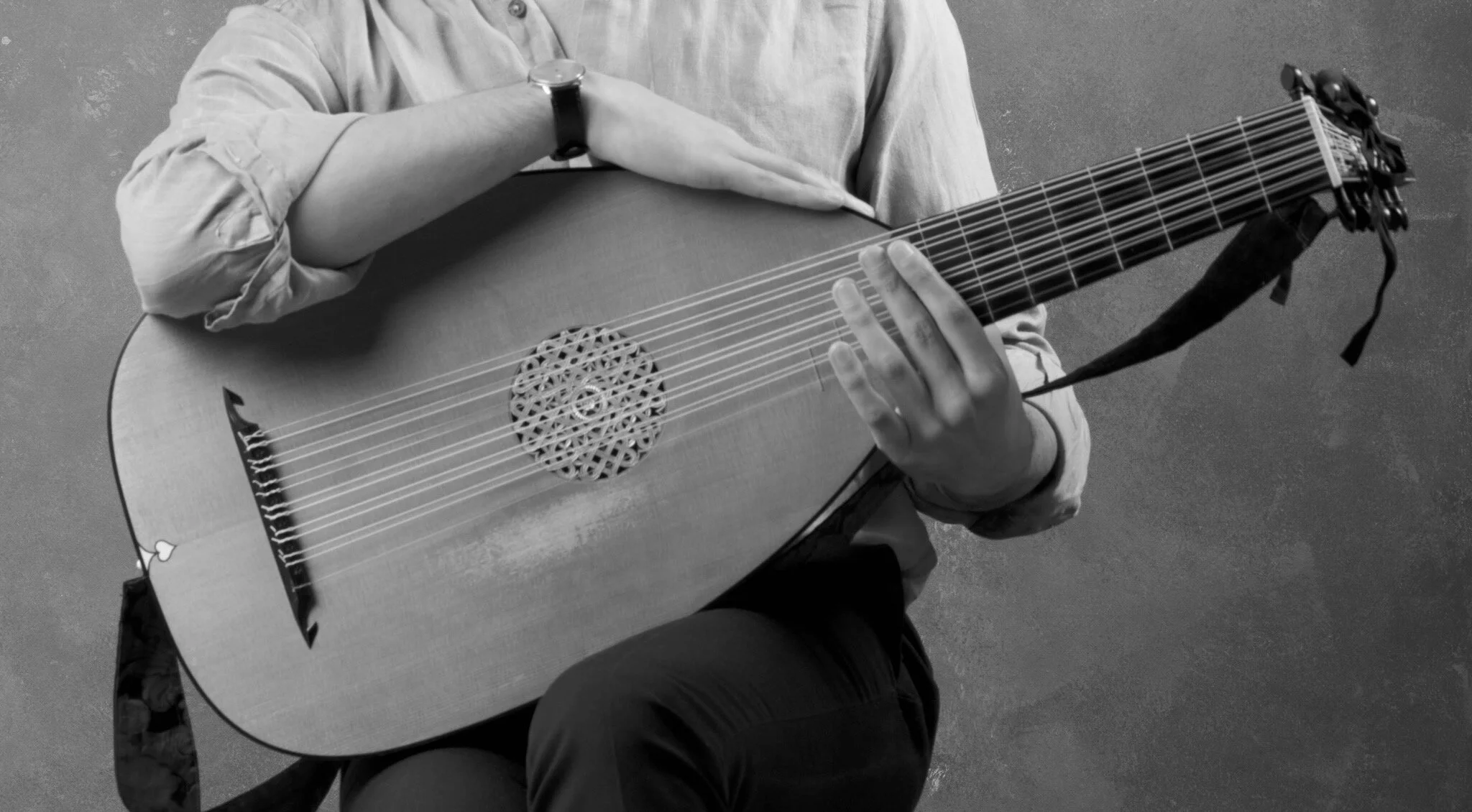The Music
Here at Dowland Youth Works, we are passionate about Lute Song.
The Elizabethans adored the lute and its delicate timbre, dubbing it the “Queen of instruments”. Naturally it’s at the core of our practice at DYW, and working closely with this instrument is a key part of what we teach.
Unlike the piano, which is the most widespread accompanying instrument today, the lute calls for an attentive, spoken quality from the singer - and it often inspires an entirely new approach to singing.
Lute song was at its apex in Renaissance England. It was John Dowland, the greatest virtuoso of his day and our eponym, who in 1597 paved the way for the genre with his phenomenally successful First Book of Songs.
Written for soprano, alto, tenor, bass, and lute, the most charming feature of the book is its layout: the parts are arranged so that, if the book is placed on a table, each musician can sit around the score and read from the same page. It was a trailblazer, and it inspired England’s richest musical tradition for the next four decades.
This music was never designed to be performed publicly (although that works well too, of course): it was made to be shared at home, around the table after dinner perhaps, by a group of friends or family.
These songs are a wellspring of depth and beauty, and often concern our darker moods: sadness, melancholy, lovesickness. These emotions are difficult to share openly, but the music conducts us there safely. It’s this spirit of intimacy and sharing that’s at the heart of what we do.
We feel honoured to be passing on this centuries-old tradition with a warm hand.




